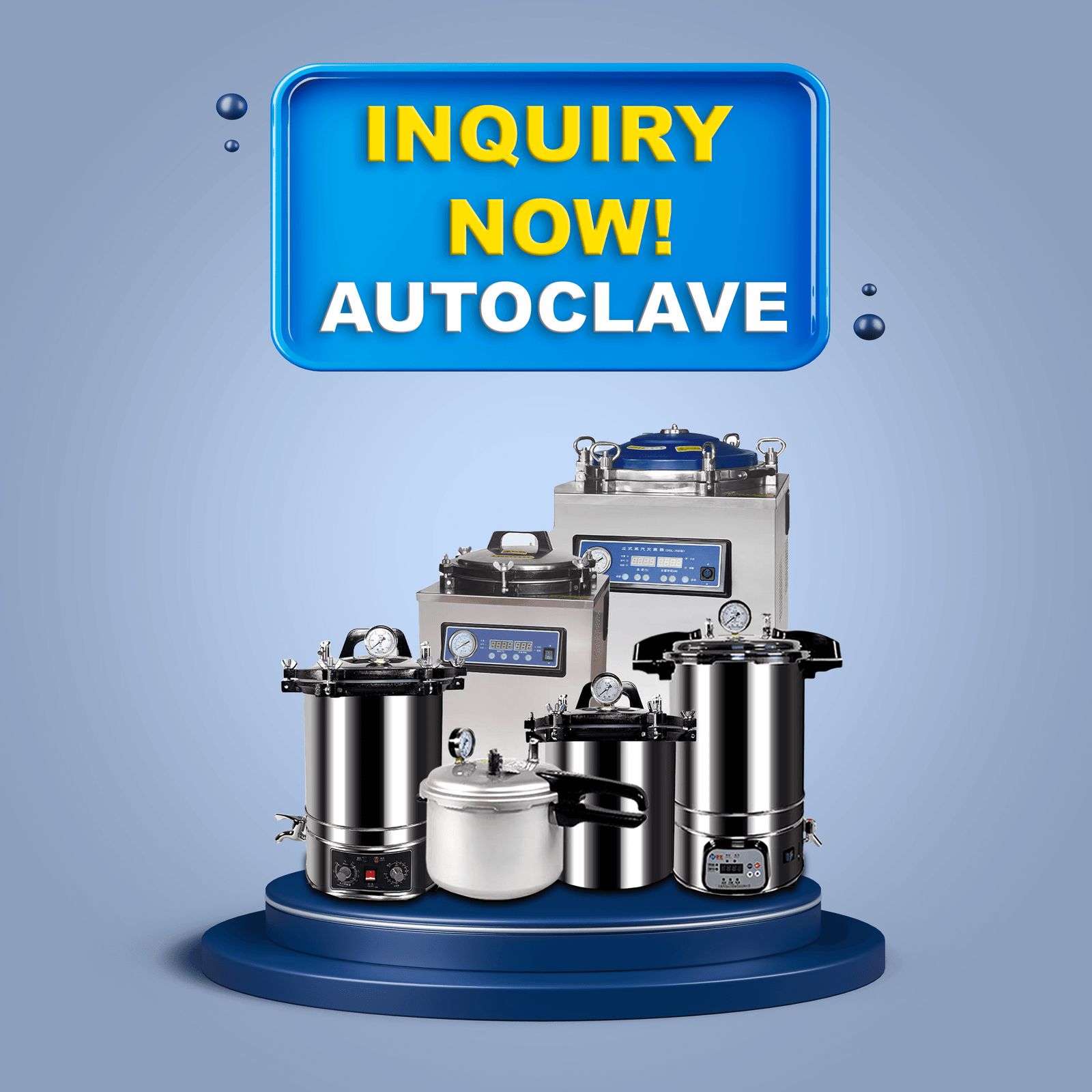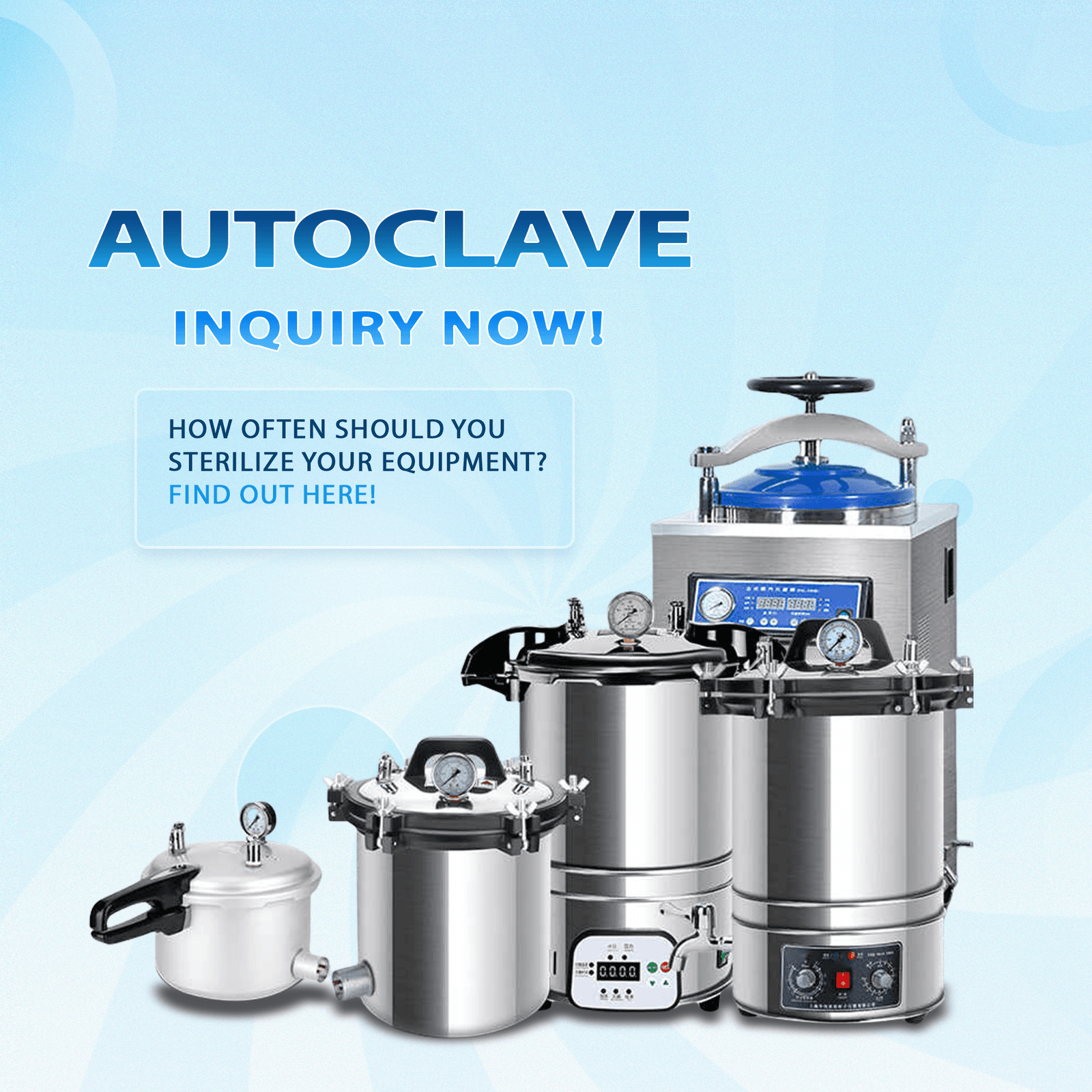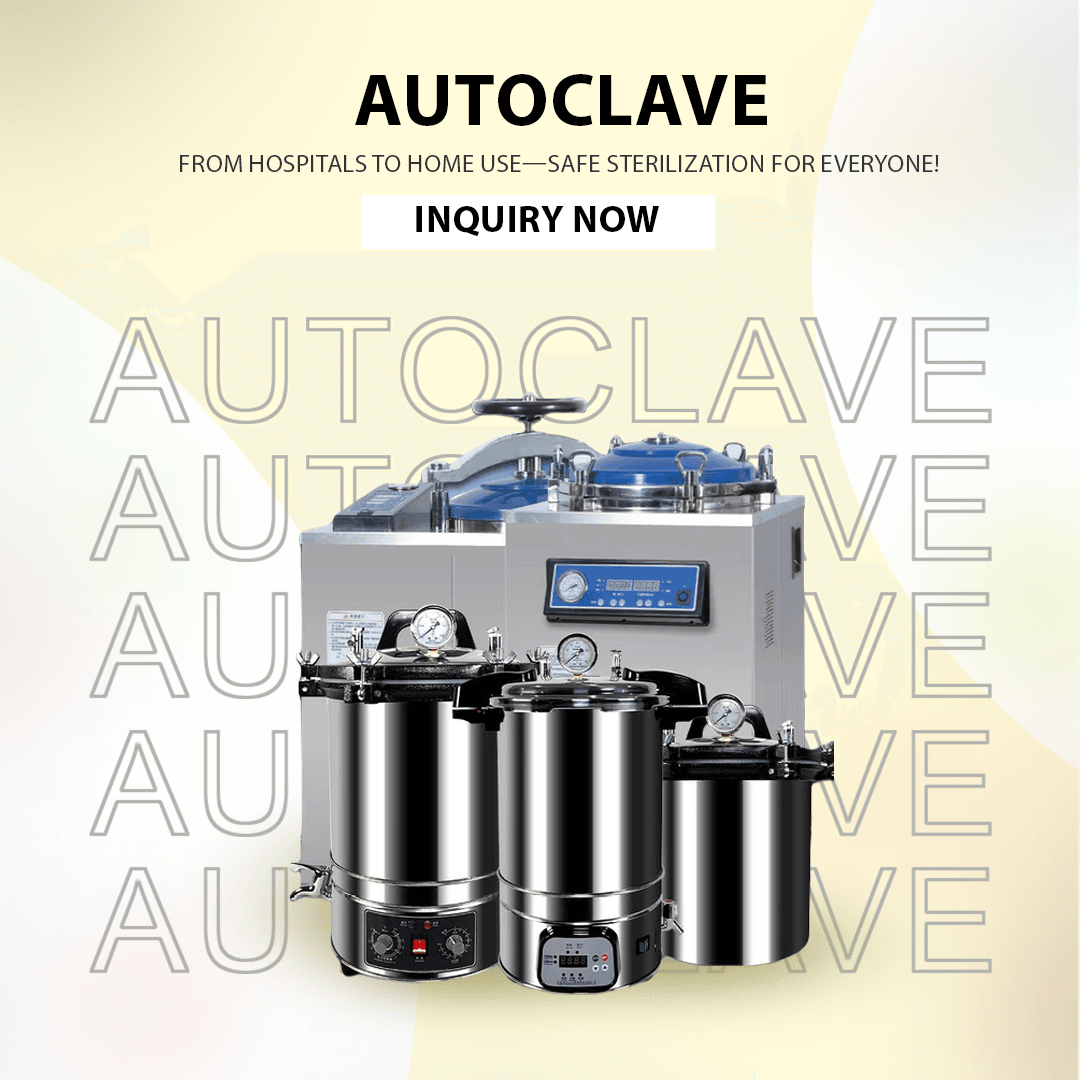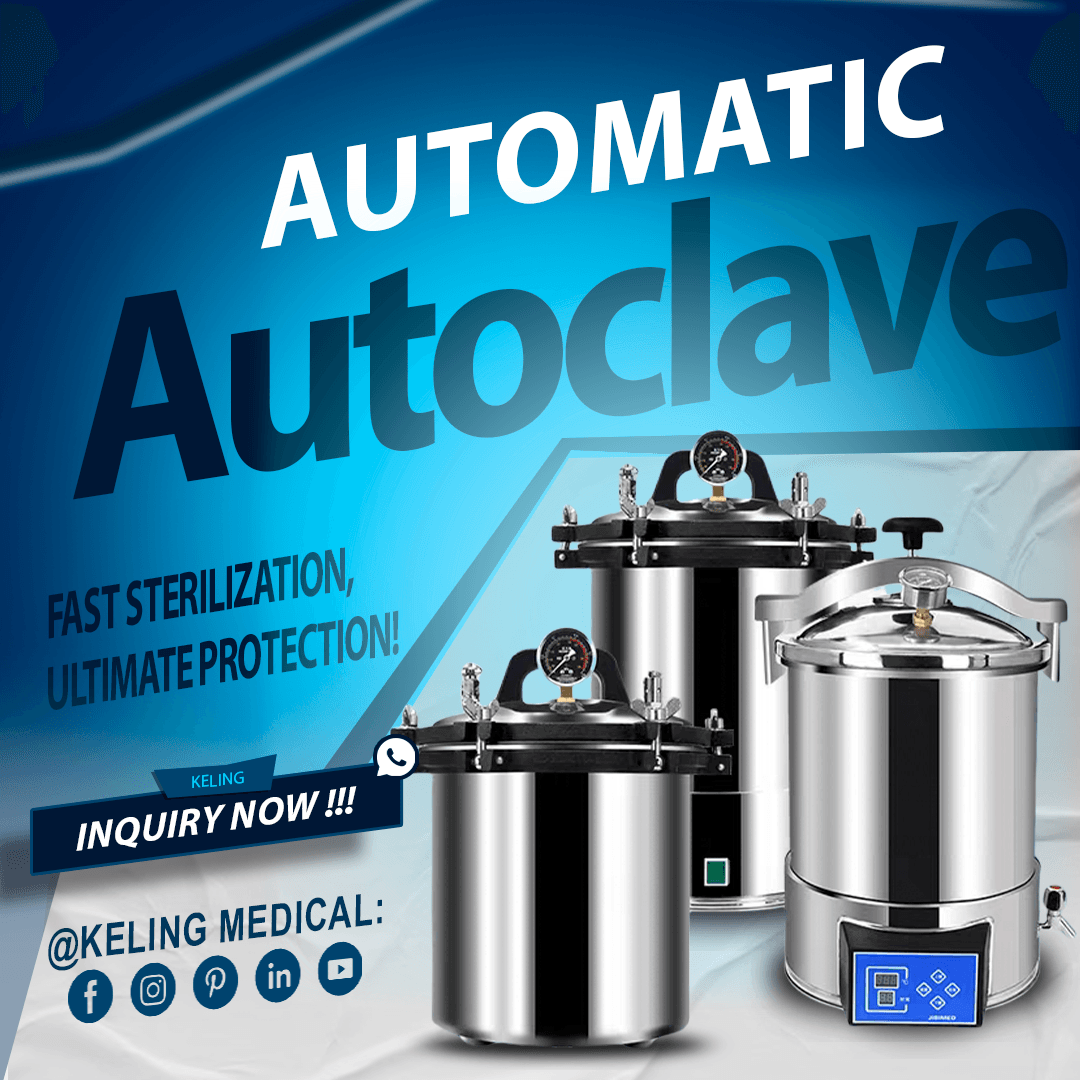
The autoclave functions as a dedicated device that performs sterilization of equipment and supplies using high-pressure saturated steam at a controlled temperature for a set duration. Autoclaves work by destroying every type of microbial life like bacteria, viruses, fungi, and spores to make instruments and materials reusable or ready for additional processing.
Multiple industries now depend on autoclaves for their essential operations.
Sterilization of surgical instruments and reusable medical devices along with dressings in healthcare settings.
Laboratories: Ensuring contamination-free glassware, media, and tools.
Pharmaceuticals: Sterilizing production equipment and materials.
Veterinary: Maintaining hygiene in animal care settings.
Industrial Applications utilize autoclaves to process materials needing sterile environments.
At its core, an autoclave operates on a simple yet powerful principle: using pressurized steam to achieve sterilization. The process involves several key steps:
Iekraušana: The autoclave chamber receives placement of instruments or materials.
Blīvēšana: The chamber remains completely sealed to stop steam from escaping.
Apkure: The chamber fills with steam because water undergoes heating to produce it.
Pressurizing: The internal pressure of the chamber builds to typical levels between 15-30 psi (pounds per square inch).
Sterilizing: Sterilization occurs as the temperature inside the autoclave reaches 121°C (250°F) or higher during a specified duration which typically lasts between 15 to 30 minutes.
Exhausting: The chamber must cool down after steam is released following sterilization before it becomes safe to open.
Effective sterilization requires both high temperature and pressure to destroy microorganisms and spores. Under high pressure the steam reaches deep into materials with pores and intricate instruments while killing even the toughest microorganisms and spores. This method achieves complete sterilization which cannot be accomplished via boiling water or dry heat methods.
Autoclaves can effectively sterilize diverse materials such as medical instruments and laboratory equipment.
Autoclaves demonstrate versatility by processing many different types of materials such as:
Surgical tools (scalpels, forceps, scissors)
Dental equipment
Endoscopes (with proper packaging)
Glassware (beakers, flasks, test tubes)
Culture media
Pipettes and petri dishes
Textile materials (surgical drapes, gowns)
Rubber and plastic items (with proper compatibility)
Waste materials (biological waste before disposal)
Some materials cannot be sterilized using autoclaving. Heat or moisture-sensitive materials including specific plastics and electronics require different sterilization approaches.
Modern autoclaves incorporate various safety components including pressure release valves and locking mechanisms alongside digital controls to protect users from accidents. Following correct procedures reduces the chances of infections and equipment errors while preventing contamination.
Autoclaves provide multiple benefits over other sterilization techniques.
This sterilization method eliminates every type of microorganism and even spores.
Speed: Quick turnaround for sterilizing large batches.
Eco-friendly: No toxic residues, unlike chemical sterilization.
Cost-effective: Reduces the need for disposable instruments.
| Metode | Principle | Plusi | Mīnusi |
|---|---|---|---|
| Autoclave | Steam under pressure | Highly effective, eco-friendly | Not suitable for all materials |
| Sausais siltums | High temperature | Good for powders, oils | Slow, uneven heating |
| Ķīmiskais | Chemical agents (e.g., EO) | Good for heat-sensitive items | Toxic residues, long aeration |
| Starojums | Gamma/X-ray | No heat, suitable for plastics | Expensive, specialized setup |
Autoclaves are the preferred choice in most healthcare and laboratory settings due to their reliability, efficiency, and safety.
For medical equipment distributors, understanding the function of an autoclave is essential for providing safe, reliable, and effective sterilization solutions to clients. Autoclaves remain the gold standard for sterilization in healthcare, laboratory, and industrial environments, offering unmatched safety and efficiency. By mastering autoclave operations and their applications, distributors can ensure the highest standards of hygiene and compliance for their customers.
An autoclave sterilizes equipment and materials using high-pressure steam, eliminating all forms of microbial life, including spores.
It uses pressurized steam at high temperatures to penetrate and sterilize instruments and materials, ensuring comprehensive decontamination.
Commonly sterilized items include medical and dental instruments, laboratory glassware, textiles, and certain plastics and rubbers.
Autoclaving is fast, effective, eco-friendly, and safe, making it the preferred method for most medical and laboratory settings.
Yes, items sensitive to heat or moisture, such as some plastics, electronics, and powders, should not be autoclaved.
Follow manufacturer instructions, use proper loading techniques, and perform regular maintenance and validation checks.
Are you a medical equipment distributor, dealer, or procurement specialist looking for reliable autoclave solutions? Sazinieties ar Keling Medical today for expert advice and high-quality autoclave equipment!
E-pasts: inquiry@shkeling.com
WhatsApp: +8618221822482
Tīmekļa vietne: https://autoclaveequipment.com/
Our team is ready to assist you with all your sterilization needs—reach out now to get started!

Veselības aprūpes un laboratoriju vidē kā būtisks solis pacientu drošības aizsardzībā un infekciju kontrolē ir jānosaka prioritāte bīstamo mikroorganismu pilnīgai likvidēšanai no visām iekārtām un materiāliem. Sterilizācija autoklāvā

Veselības aprūpes nozarē ir spēkā stingri noteikumi, un, lai pasargātu pacientus no infekcijām un saglabātu drošības standartus, ir nepieciešama medicīnas instrumentu sterilitāte. Jaudīgs autoklāvs sterilizators veido galveno sastāvdaļu

Autoklāviem ir būtiska nozīme veselības aprūpē, jo tie sterilizē medicīnas instrumentus un materiālus, tādējādi palīdzot kontrolēt infekcijas. Regulāra apkope un pareiza tīrīšana nosaka, vai šīs ierīces darbosies efektīvi. Medicīnas

Autoklāvs ir būtisks aprīkojums veselības aprūpē un infekciju kontrolē, lai uzturētu sterilitāti medicīnas instrumentiem un laboratorijas iekārtām, kā arī citiem svarīgiem materiāliem. Medicīniskā aprīkojuma piegādātāji un iepirkuma eksperti

Lai efektīvi novērstu infekcijas un aizsargātu pacientu veselību, veselības aprūpes pakalpojumu sniedzējiem ir jānosaka instrumentu un materiālu sterilitāte. Sterilizācija autoklāvā ir ārkārtīgi uzticama metode, ko plaši izmanto visā pasaulē.

Veselības aprūpes nozarē ir nepieciešami stingri infekciju kontroles pasākumi, tāpēc drošības un higiēnas nodrošināšanai ir būtiski daži termini un rīki. Medicīnā un laboratorijās, kur nepieciešami sterili apstākļi.